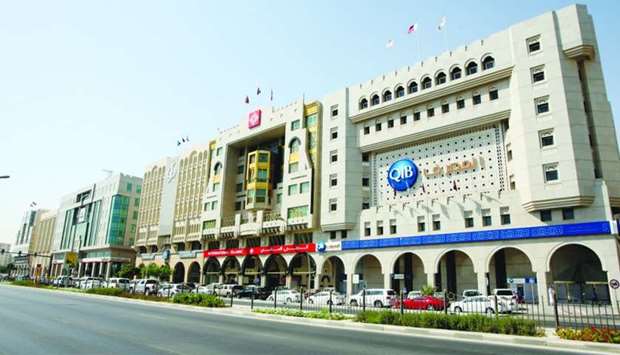Robust expansion in core earnings and better cost management have helped Qatar's banking sector display better cost-efficiency among Gulf lenders, according to experts.
Interest earnings have maintained its growth trajectory although there have been some pressure points in the asset quality but largely mitigated by adequate provisions, an analyst with an investment firms said, adding cost optimisation has also increasingly got into Doha's banking vocabulary.
Branch rationalisation and increased use of technology have started showing results for the banks in terms of costs, said a top official of a bank, which has already begun restructuring of branches.
A recent report from Kamco research appears to support cost efficiency of the Qatar's banking sector. It found that Qatar's banks' cost-to-income ratio is at 31.4% during the second quarter this year against 34.1% in the corresponding period of 2018.
"The impact of scale was clearly visible with smaller banks in Bahrain and Oman reporting a significantly higher cost-to-income ratio of 48.2% and 47.4% respectively," Kamco said in its research note.
Net interest income growth was strongest in Qatar which recorded a quarter-on-quarter expansion of 2.8% whereas most other countries recorded marginal growth, the report said.
QNB’s 4.3% growth as well as Commercial Bank's and Al Khaliji's 9.7% and 5.9% growth respectively more than offset the decline in aggregate net interest income during the quarter, it added.
"The (banking) outlook is positive, given the fact that Qatar has lifted the moratorium on its North Field and its non-hydrocarbons have started making stronger and deeper impacts in the domestic economy," the analyst said.
Considering that tourism sector has "higher potential to leverage on the base effect", he said the banking sector ought to address the needs of this segment, which should somehow think out-of-the-box than emulating policies tested elsewhere in the region. The localisation of energy services would also support non-oil growth and create demand for credit, including from small and medium enterprises, said a recent report from Moody’s, an international credit rating agency.
It had said outlook for Qatar’s banking system remains "stable" as continued spending on the country’s infrastructure projects will drive modest economic growth and support lending.
Amidst the blockade, Qatar's banking sector has shown resiliency, which is evident from the profitability trend at the end of second quarter of 2019, an official of a leading investment firm said.
The banking sector alone constituted about 63% of the overall net profitability of the 46 listed companies during the first half of this year. The banks and financial services sector reported 5.16% expansion in net profit compared to 6% decline in the overall profitability of the listed entities during the review period.
Branch rationalisation and increased use of technology have started showing results for the banks in terms of costs, said a top official of a bank, which has already begun restructuring of branches.
A recent report from Kamco research appears to support cost efficiency of the Qatar's banking sector. It found that Qatar's banks' cost-to-income ratio is at 31.4% during the second quarter this year against 34.1% in the corresponding period of 2018.
"The impact of scale was clearly visible with smaller banks in Bahrain and Oman reporting a significantly higher cost-to-income ratio of 48.2% and 47.4% respectively," Kamco said in its research note.
Net interest income growth was strongest in Qatar which recorded a quarter-on-quarter expansion of 2.8% whereas most other countries recorded marginal growth, the report said.
QNB’s 4.3% growth as well as Commercial Bank's and Al Khaliji's 9.7% and 5.9% growth respectively more than offset the decline in aggregate net interest income during the quarter, it added.
"The (banking) outlook is positive, given the fact that Qatar has lifted the moratorium on its North Field and its non-hydrocarbons have started making stronger and deeper impacts in the domestic economy," the analyst said.
Considering that tourism sector has "higher potential to leverage on the base effect", he said the banking sector ought to address the needs of this segment, which should somehow think out-of-the-box than emulating policies tested elsewhere in the region. The localisation of energy services would also support non-oil growth and create demand for credit, including from small and medium enterprises, said a recent report from Moody’s, an international credit rating agency.
It had said outlook for Qatar’s banking system remains "stable" as continued spending on the country’s infrastructure projects will drive modest economic growth and support lending.
Amidst the blockade, Qatar's banking sector has shown resiliency, which is evident from the profitability trend at the end of second quarter of 2019, an official of a leading investment firm said.
The banking sector alone constituted about 63% of the overall net profitability of the 46 listed companies during the first half of this year. The banks and financial services sector reported 5.16% expansion in net profit compared to 6% decline in the overall profitability of the listed entities during the review period.


